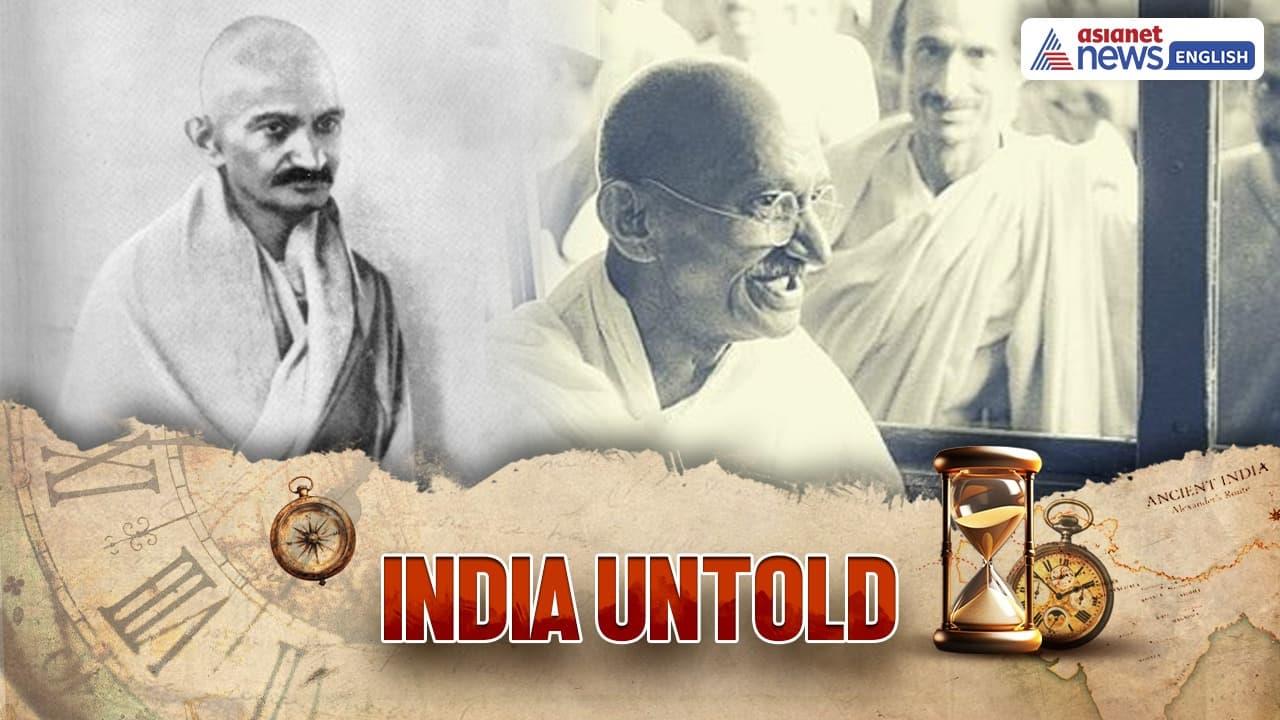
India Untold: How Madurai Inspired Mahatma Gandhi's Iconic Loincloth Attire
He may have been ridiculed as a“half-naked seditious fakir”, yet Mahatma Gandhi's iconic transformation into the bare simplicity of a loincloth became an immortal emblem of the common man's dignity and spiritual might. Nearly 88 years ago, Winston Churchill, unable to contain his fury, sneered at Gandhi with the now-infamous remark.
"It is alarming and also nauseating to see Mr Gandhi, an Inner Temple lawyer, now become a seditious fakir of a type well known in the East, striding half-naked up the steps of the Viceregal Palace, while he is still organizing and conducting a defiant campaign of civil disobedience, to parley on equal terms with the representative of the King-Emperor."
Gandhi's simple loincloth was not just fabric-it was resistance woven into his very being, a rejection of imperial arrogance. But this choice was not born overnight; its roots stretched back to the ancient city of Madurai, a decade before Churchill's tirade.
Becoming a Fakir
The word 'fakir', derived from the Arabic faqr meaning poverty, describes one who renounces worldly possessions for a life of spiritual humility. Gandhi's own renunciation was triggered during his South India tour in September 1921. While championing civil disobedience through boycotts of foreign goods and advocating Khadi, he was confronted with a raw question:“If the labourers burn their foreign clothing, where are they to get khadi from?”
That plea shook him. Writing in Navajivan on October 2, 1921, Gandhi confessed, "On the way (from Madras to Madurai by train) I saw in our compartment crowds that were wholly unconcerned with what had happened. Almost without exception, they were bedecked in foreign fineries. I pleaded for Khadi. They shook their heads as they said, 'We are too poor to buy Khadi and it is so dear.' ... What effective answer could I give them, if it was not to divest myself of every inch of clothing I decently could and thus to a still greater extent bring myself in line with ill-clad masses? And this I did the very next morning after the Madura meeting.”
That morning, on September 22, 1921, Gandhi emerged in Madurai clad only in a simple white loincloth-shedding not just his shirt and cap, but also the last remnants of colonial influence.
A. Annamalai, Director of the National Gandhi Museum, explains, "There were two issues worrying Gandhiji. He had been struck by the poverty he had seen around him as far back as during the Champaran satyagraha days. But this visit to South India made it all the more starker to him. The sight of poor peasants working in the fields in their loin clothes and their struggle for food and livelihood troubled him.”
That very building in Madurai where he took this momentous decision is soon to be declared a heritage site.
Annamalai adds,“The production of khadi was at the beginning stage, and the Mahatma wanted to set an example... On September 22, he decided to abandon wearing the shirt and cap forever.”
This wasn't a mere change of wardrobe-it was a revolution draped in simplicity. Gandhi clarified in Navajivan,“I do not want either my co-workers or readers to adopt the loincloth. But I do wish that they should thoroughly realise the meaning of the boycott of foreign cloth and put forth their best effort to get it boycotted, and to get khadi manufactured. I do wish that they may understand that swadeshi means everything.”
M.P. Gurusamy, Secretary of the Gandhi Museum, captured the essence perfectly,“The adoption of a dhoti and a shawl in the place of an elaborate Gujarati attire is a symbolic external manifestation of an internal revolution. The dress of liberty turned into the Mahatma's identity.”
Legal Disclaimer:
MENAFN provides the
information “as is” without warranty of any kind. We do not accept
any responsibility or liability for the accuracy, content, images,
videos, licenses, completeness, legality, or reliability of the information
contained in this article. If you have any complaints or copyright
issues related to this article, kindly contact the provider above.
Most popular stories
Market Research

- Crypto Market Update: Pepeto Advances Presale With Staking Rewards And Live Exchange Demo
- Tria Raises $12M To Be The Leading Self-Custodial Neobank And Payments Infrastructure For Humans And AI.
- Simplefx Relaunches First Deposit Bonus
- Chartis Research And Metrika Release Comprehensive Framework For Managing Digital Asset Risk
- Whale.Io Launches Battlepass Season 3, Featuring $77,000 In Crypto Casino Rewards
- M2 Capital Announces $21 Million Investment In AVAX Digital Asset Treasury, AVAX One




















Comments
No comment